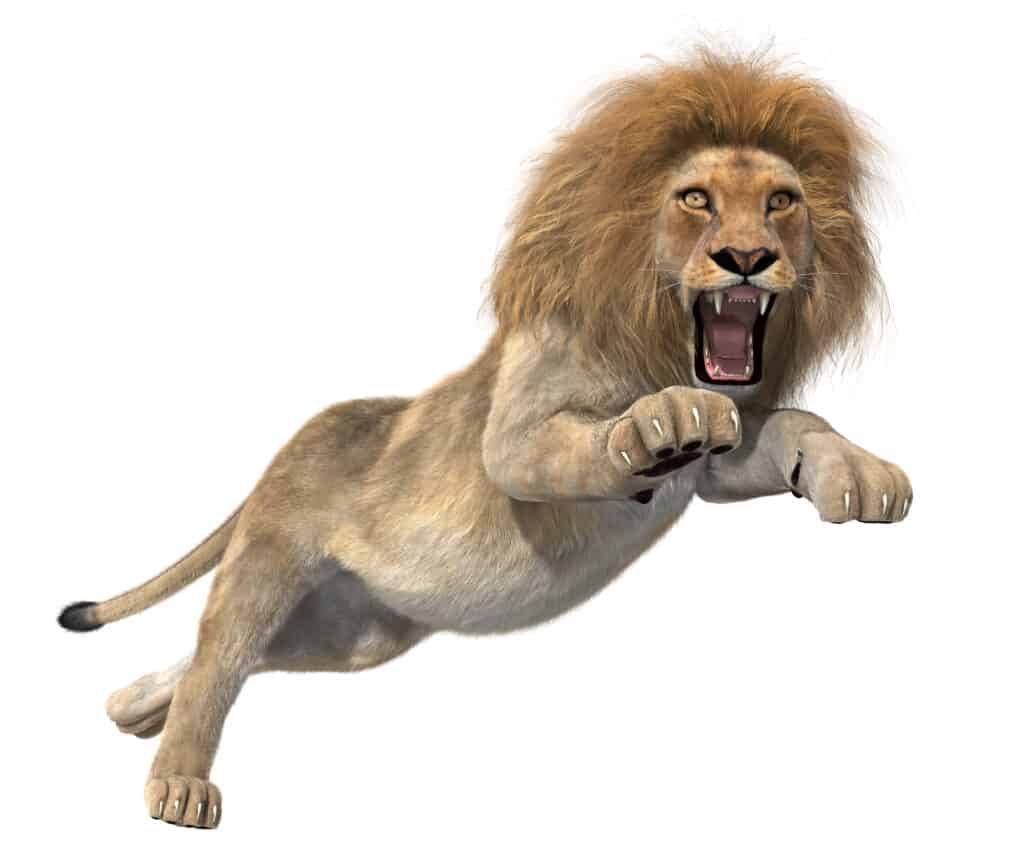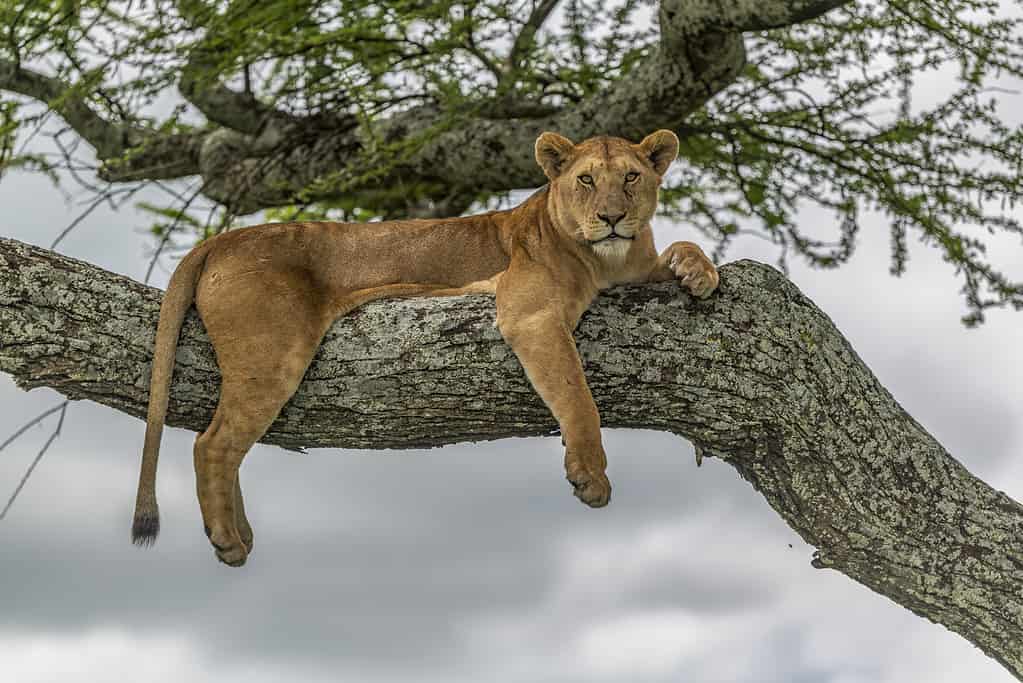Lions are powerful cats that can be found throughout Africa and Northwestern India. They have adapted to a variety of different habitats, most of which consist of grassy plains and semi-arid deserts. They are naturally predatory animals and have the necessary skills and drive to be agile hunters and one of Africa’s strongest apex predators.
In order to catch their prey and survive the threats in the wild, lions need to be able to jump both high and far.
A Lions Jumping Abilities
On average, lions can jump around 12 feet high and leap 36 feet across. Therefore, lions can jump as high as a two-story building and leap (horizontally) the distance of a humpback whale. Some lions can jump as high as 18 feet into the air and leap up to 40 feet across depending on their size and strength. Smaller lions may only jump a distance of 10 feet, and higher when necessary. Generally, the Asiatic lion cannot jump as high as the African lion due to the size differences.

Lions can jump around 12 inches high and leap 36 feet across thanks to their powerful hind legs.
©Veronika Surovtseva/Shutterstock.com
Lions are equipped with powerful and muscular hind legs that give them the ability to jump and leap incredibly high and far despite their bulky bodies. The average size of a lion is around 6 to 8 feet in length, with a weight of up to 600 pounds. Lions primarily rely on their hind legs to jump and leap while catching their prey, running, and planning a strategic attack. Their body is relatively muscular and generates a lot of force while a lion is jumping.
Muscle Fibers
Lions have nonoxidative fast-twitch muscle fibers (type IIb) in their legs and the rest of their body. These muscles act incredibly quickly, although they can tire more easily. This type of muscle fiber allows the lion the jump and leap quickly as a response to prey, and predators, or while sprinting.
Another example of an animal with fast twitch muscle fibers is a domestic cat. They belong to the same family as lions, and both cats have muscle fibers that allow them to engage in quick yet powerful bursts of energy. Lions rely on fast-twitch muscle fibers when hunting prey and defending themselves. These high-intensity activities can tire a lion out quickly since their muscle type is incredibly large and gets worn down faster.
Why Do Lions Need to Jump Both High and Far?
- To hunt.
- To take down large prey.
- To leap from great distances.
- To scale trees with agility.
- To escape or defend themselves against predators.
Lions need the ability to jump and leap great distances when they are performing different highly intensive activities like hunting. Some lions prey on animals that are large and strong themselves, so jumping onto their prey is advantageous for lions.
Lions are also ambush predators that will hide and wait for unsuspecting prey to come within their reach. They will use their powerful hind legs to jump and pounce on their prey for a quick and skilled takedown. Most lions will jump onto their prey since it is guaranteed to be a more successful kill. Jumping gives lions, the advantage of knocking down their prey with full force, even prey as large as buffalo.

Buffalo
is a popular prey animal for African lions, who use their powerful legs to pounce on them.
©nwdph/Shutterstock.com
Furthermore, lions rely on their ability to jump and leap far if they want to get away from potential threats quickly. These threats include humans, crocodiles, leopards, hyenas, and even African wild dogs. Lions can use their powerful hind legs to jump and climb into trees, where they have the opportunity to leap down onto prey or make a safe landing from a certain height.
Do Lions Always Land on Their Feet After Jumping?
Most felines almost always land on their feet when jumping down from a high distance. Lions have a heavy body weight, and their legs need to be built to support their bulky bodies from the impact of leaping or jumping high distances.
So, how do lions seem to always land on their feet without getting injured?
The Righting Response
Also known as the labyrinthine righting reflex, is a type of reflex that allows members of the cat family to maintain an upright position in the air. This allows lions to twist and orient themselves in the air to land safely. This is possible even if the way they jumped was unstable from the start. This is also one of the main reasons adult lions are more agile than cubs. Lions’ cubs generally don’t develop this response until they are a couple of weeks old.
Flexible Spines
Lions have flexible spines that allow them to twist and move in a wide range of motion while running or jumping. Their flexible spines allow them to quickly twist and right themselves to land on their feet. It plays a role in their natural righting response too.
Special Paw Pads
A lion’s specialized paw pads help to absorb the impact of their fall. It puts less pressure on their hind legs and helps stabilize their landing. Their paw pads consist of multiple layers that make them impact resistant.

Lionesses are typically better jumpers than males because their lighter weight makes them more agile.
©iStock.com/Jennifer Watson
Strong Tails for Balance
Lions have strong and sturdy tails that they use for balance during activities like running, climbing, or jumping. It gives them extra stability and counterbalance when jumping or leaping large distances and sprinting.
Large Hind Legs
In comparison to other felines, lions have one of the largest and most powerful proportionate hind legs. Their hind legs generate a lot of power when jumping, leaping, and sprinting, and help stabilize their landing.
In Summary
Lions average a jumping distance of 12 to 18 feet in the air and a leaping distance of 36 to 40 feet. They are well-equipped with powerful hind legs, impact-resistant paw pads, and fast-twitch muscle fibers to help them jump or leap great distances.
The photo featured at the top of this post is © SteffenTravel/Shutterstock.com
Thank you for reading! Have some feedback for us? Contact the AZ Animals editorial team.







